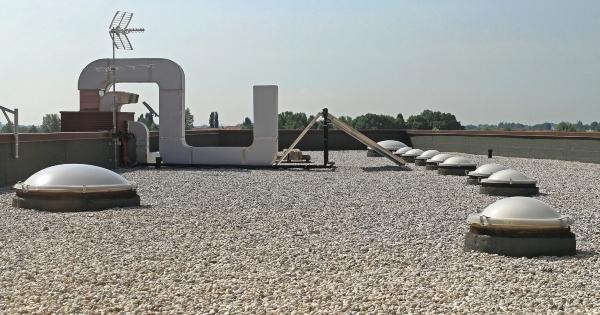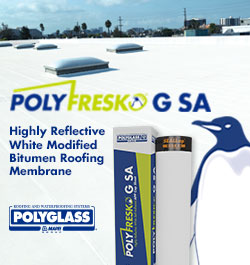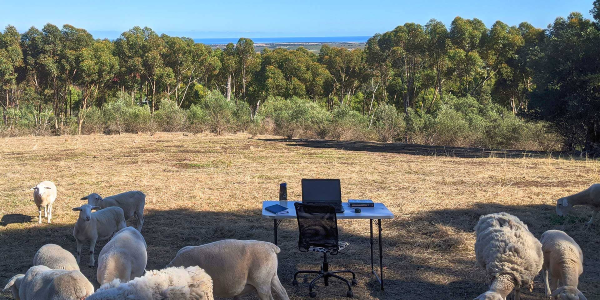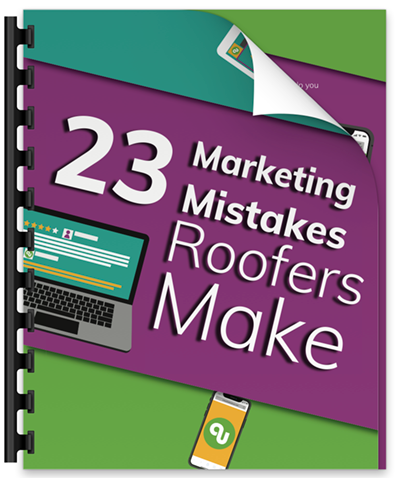What to Know About Protecting and Fixing a Skylight

By Topps Products.
Skylights have many benefits but as with any rooftop penetration, they can be a prime source for leaks.
Skylights are a popular feature of many commercial buildings. They are a great way to bring pleasant, natural lighting into commercial spaces that may necessarily have few windows, and they can help save on energy costs. However, as with any roofing fixture, skylights can be weakened by weather, age, or improper installation, compromising the integrity of the roof and exposing the building to the elements. In this article, we'll talk about the various hazards to skylights, how to repair a leaking skylight, and how to protect the skylight from damage and leaks.
First, rule out condensation
Just as windshields have a tendency to fog up on a cool morning, environmental humidity will often condense on the pane of a skylight. Any temperature variation between the inside
and outside of the skylight will cause moisture to gather on the pane. This is especially common during rainstorms and cold weather. If you see fogging or water beading on the skylight pane, it's a condensation issue.
Check weep holes
To prevent condensation from building up and raining back down into the building, skylights are outfitted with “weep holes,” small openings along the side that allow condensation to drain out onto the roof. If these holes are obstructed, condensed water has nowhere to go but down. If you suspect the skylight is leaking, first check to make sure that the weep holes are clear, and to unblock them if necessary. If condensation continues to be a problem once this is done, you may need to replace the skylight. If condensation stops, but there is still a drip, it's probably a leak.
What are the causes of a leaky skylight?
There are a number of factors that can cause a skylight to leak. Here are the most common:
- Damaged Flashing
- A variety of things can weaken or damage skylight flashing. Moisture can corrode or deteriorate the metal, and weather and debris can dent, warp, or loosen it. Temperature fluctuations cause roofs to expand and contract, pulling flashing away from the roof over time. Any such weakening of flashing can cause water to get through a skylight.
- Damaged Roof Cement
- In cases where a skylight is installed with roof cement, that may be the source of the leak. The elements can cause cement to crack or crumble over time. Pores, pinholes, and cracks in cement make a perfect passageway for water to get through.
- Compromised Pane Seal
- Water can also find its way directly through the gaps between the pane and the frame if the pane is not properly sealed.
- Improper Installation
- Ideally, the skylights were installed carefully and competently, but even an experienced installer can make a mistake, especially if they are unaware of the roof's characteristics or the manufacturer's specifications.
Other skylight hazards
Though leaking is one of the most common forms of skylight damage, it isn't the only one. Skylights, like the rest of the roof, are exposed to the elements day in and day out, and they face a multitude of hazards.
- Debris
- Heavy objects present a danger to glass, fiberglass, and polycarbonate skylight panes. Overhanging tree limbs can drop onto the panel, and rooftop debris or improperly secured equipment can fly into them during high winds.
- Acid Rain
- Acid rain and other pollutants can take a toll on skylights, dirtying them over time and causing oxidation and chalking.
- UV Rays
- Ultraviolet radiation can also damage skylight panes, causing fiberglass and polycarbonate panels to yellow over time. Additionally, UV rays coming in through your skylight can bleach wooden furniture or paper products and cause skin damage to the people inside.
Protecting the skylights
Given these hazards, there are a few things that can prepare a skylight and head off costly repairs in the future.
- Prevent Leaks
- The best way to prevent a leaking skylight is with careful installation and regular inspection. If small leaks begin to occur, check for wear along the flashing. Small openings in the flashing can generally be resealed with a flashing cement protected by a polyester membrane.
- Remove Debris
- At least once a year, inspect the roof for potentially dangerous hazards. Remove any debris, trim overhanging tree limbs, and ensure that rooftop equipment is properly secured.
- Apply a Protective Coating
- To protect fiberglass or polycarbonate skylights from the elements, apply skylight sealant. These products can extend the life of skylights by strengthening them and preventing oxidation and chalking. A UV-blocking film can also protect the skylight and the building from the sun.
How to repair a leaking skylight
How you repair a leaky skylight depends on the source of the leak. The first thing to do, as we mentioned earlier, is to rule out condensation. Once you've done this, you'll need to determine where the leak is coming from. You can try to replicate the leak with a hose if needed.
- Seal gaps in flashing
- If the leak appears to be occurring as a result of compromised flashing, you can re-seal any gaps with a durable flashing cement. After you've done so, we recommend applying a polyester membrane for total impermeability.
- Replace or repair flashing
- If the flashing is corroded or damaged beyond the small gaps caused by everyday wear, it may be necessary to replace it outright.
- Seal the pane
- If the leak appears to be occurring between the pane and the frame, you'll have to reseal the pane with caulking, preferably a caulking that is able to move with the substrate.
Conclusion
Skylights are a popular and beneficial feature of many commercial roofs, but they're also prone to damage and leaking. Careful installation and regular inspection can prevent the worst damage, but to get the most out of a skylight it is helpful to apply a protective sealant. Doing so could save time and money down the road.
Learn more about protecting skylights with Skycoat.
Discover the benefits of becoming a Topps® Certified Installer
Original article source: Topps Products



















Comments
Leave a Reply
Have an account? Login to leave a comment!
Sign In